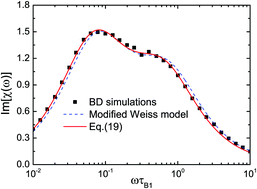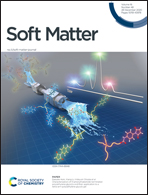Generic theory of the dynamic magnetic response of ferrofluids†
Abstract
Ferrofluids belong to an important class of highly functional soft matter, benefiting from their magnetically controllable physical properties. Therefore, it is of central importance to quantitatively predict the dynamic magnetic response of ferrofluids. Traditional dynamic theories, however, are often restricted to the near-equilibrium regime and/or only apply to nearly ideal ferrofluids that are monodisperse, dilute enough, and weakly interacting. In this paper I develop a self-consistent and nonperturbative dynamical mean field theory for typical ferrofluids which are often polydisperse, concentrated, and strongly interacting, possibly driven far from equilibrium. I obtain a general nonperturbative expression for the dynamic magnetic susceptibility, quantitatively agreeing with the spectra obtained from Brownian Dynamics simulations on both mono- and bidisperse samples. Furthermore, I derive a generic magnetization relaxation equation (MRE) for both mono- and polydisperse ferrofluids by employing the projection operator technique in nonequlibrium statistical mechanics. This MRE is in simple closed form and independent of which model is employed to approximate the equilibrium magnetization curve. Existing models can be recovered as low-order approximations of my generic and nonperturbative MRE. My theory can play a key role in studying the dynamics of ferrofluids and other polar fluids. It may also have substantial and immediate consequences to various ferrofluid applications.



 Please wait while we load your content...
Please wait while we load your content...